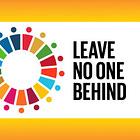When the WHO's Pandemic Agreement was adopted in May 20251, headlines focused on legal powers and its One Health framing. Hidden inside is the true operating system of global governance — a mechanism that makes health, environment, and social behaviour programmable. Its name is PABS2: Pathogen Access and Benefit-Sharing3.
PABS is not a mere annex about virus samples. It's the execution engine that turns pandemic response into a programmable governance system — the final component in a global cybernetic 'moral economy', where monetary authorities can algorithmically redefine virtue itself.
This isn’t an opinion piece, but a technical deconstruction of the operating system that most journalists, politicians, and even policy analysts haven’t noticed — because it’s been intentionally distributed across agencies so no one sees the whole.
Executive Summary
When the World Health Organization adopted its Pandemic Agreement in May 2025, most coverage focused on emergency powers and disease prevention. But hidden within the treaty is a mechanism called PABS (Pathogen Access and Benefit-Sharing) that functions as a global control system that can regulate human behavior by controlling access to resources, technology, and economic participation.
PABS works by making everything conditional. Countries that want access to virus samples, research funding, medical technology, or favorable trade terms must comply with health governance rules that can expand to cover virtually any human activity. This isn't accidental — the same institutional network implementing PABS today wrote the blueprint for this system twenty years ago in the ‘Manhattan Principles’ of 2004, long before COVID-19 made pandemic governance politically feasible.
The system operates through a distributed network of organizations (WHO, World Bank, GAVI, pharmaceutical partnerships) that makes democratic oversight nearly impossible while enabling real-time enforcement through financial mechanisms. By linking health compliance to economic access and using ‘One Health’ framing that treats everything as a health issue — from climate change to agriculture to social behavior — PABS creates a programmable governance system where compliance becomes automatic and resistance becomes financially devastating.
This represents the completion of what can be called ‘algorithmic governance’ — where human behavior across all domains (environmental, social, economic) becomes subject to computational control through conditional access to the resources needed for modern life, all under the guise of a moral economy that reframes compliance as virtue and resistance as unethical and selfish.
Cybernetic Control Through Conditional Access
To understand PABS, we need to examine its structural DNA. The system is architecturally identical to the Planning–Programming–Budgeting System (PPBS) that Robert McNamara introduced at the U.S. Department of Defense in 19614, later mandated across all federal agencies by Lyndon B Johnson in 19655.
PABS is essentially PPBS 2.0 for global health — the same cybernetic logic, updated with modern Results-Based Management6 (RBM) and Key Performance Indicator7 (KPI) frameworks, and modularised so every 'programme element' can be conditionally triggered.
Element PPBS (1960s–present). PABS (2020s–present)
Input Budget requests, project Pathogen samples, genetic
proposals, programme data sequence data,
epidemiological models
Processing Programme evaluation, Risk assessment, benefit-
priority setting, cost– sharing terms, One Health
benefit analysis prioritisation
Conditions Funding contingent on Access to benefits
compliance with programme contingent on compliance
plans with sharing rules
Output Allocated budgets, Allocated benefits (funding
operational programmes tech, IP rights)
Feedback Loop Performance reviews alter Compliance and risk reviews
future budgets and alter benefit access and
programmes obligationsBut PABS represents a significant evolution from the original PPBS model:
Distributed by design → No Johnson-era central bureau that could be held accountable or audited; instead PABS operates through a distributed global network (WHO, GAVI, CEPI, World Bank, regional health bodies, pharmaceutical partnerships) where responsibility is diffused across institutions and jurisdictions. No single entity controls the whole system, making democratic oversight nearly impossible and creating institutional plausible deniability.
Real-time enforcement → Not quarterly reports and annual budget reviews, but live KPI dashboards tracking every pathogen sample submission, genetic sequence upload, compliance metric, and benefit distribution in real-time. Automated systems can trigger conditional responses instantly — cutting off access, redirecting resources, or escalating enforcement without human intervention or political review.
Global interoperability → Modular programme elements specifically engineered to plug directly into environmental monitoring systems (NGFS climate risk models8), social governance frameworks (SDG indicators9), and economic enforcement mechanisms (ESG scores, carbon markets, CBDC infrastructure). Each PABS compliance metric can automatically trigger responses across multiple governance domains simultaneously10.
The genius of PPBS was that it turned budgeting into a cybernetic control system — transforming political resource allocation into algorithmic conditional access. Funds only flowed to actors following the central plan, and review cycles could adjust future allocations based on performance metrics rather than democratic deliberation. PABS does precisely the same for health governance — pathogen data, technology, funding, and market access only flow to actors following centrally-defined rules, with review cycles able to redefine those rules and benefits at will through computational risk assessment.
PABS is literally the operational kernel that makes the Pandemic Treaty enforceable and expandable — just as PPBS was the operational kernel that made LBJ's Great Society and later UN SDG frameworks function as cybernetic systems rather than traditional democratic programmes.
The Link to Manhattan
The institutional architecture implementing PABS wasn't improvised in response to COVID-19 — it was blueprinted no less than twenty years earlier. Manhattan Principle 911, formulated in 2004, explicitly called for ‘coordination of responses among governmental and nongovernmental agencies, public and animal health institutions, vaccine / pharmaceutical manufacturers, and other stakeholders’ — precisely the constellation now operationalising PABS through WHO, GAVI, CEPI, World Bank, and pharmaceutical partnerships.
This reveals PABS not as pandemic-driven innovation but as the execution phase of a governance system under the ‘One World, One Health’ framework. The twenty-year implementation timeline from conceptual blueprint to operational deployment demonstrates the methodical institutional engineering behind what appears to be emergency response.
When the same organisations that designed the Manhattan Principles in 2004 are implementing PABS in 2024, using the same ‘One Health’ justifications for scope expansion they articulated two decades ago, the system's deliberate architecture becomes undeniable. PABS represents the maturation of a cybernetic governance project that began before most people had heard of pandemic preparedness, now reaching operational capacity precisely when global crises provide the political justification for its deployment.
Scope Creep by Design
PPBS stumbled into scope expansion; PABS is engineered for it.
The PPBS precedent: When Robert McNamara introduced the Planning–Programming–Budgeting System (PPBS) to the Department of Defense in 1961, its programme elements were initially defined for clearly military-technical purposes. Over the decade, however, the same budget logic proved adaptable to non-military domains. By the late 1960s, programme codes originally tied to missile-defense and strategic systems were being applied to domestic security and infrastructure projects, while Earth-observation and environmental monitoring satellites were integrated into defense-related R&D and intelligence budgets.
McNamara carried this logic with him to the World Bank in 1968, where he created the Country Program Paper (CPP) framework12 — effectively PPBS on a global scale. Instead of weapons systems, the programme elements were national development plans; instead of congressional appropriations, the conditional funding came from multilateral loans; and instead of Pentagon review boards, the feedback loop was enforced through Bank missions and performance assessments. The CPP system embedded the same cybernetic allocation principles into international lending, making access to development finance contingent on compliance with centrally determined priorities and indicators.
From the outset, PABS is defined in terms that enable broad applicability beyond narrow pathogen control. The Malaysian13 submission’s…
Article 3(i)(ii) defines ‘PABS Sequence Information’ to include genetic, genomic, and proteomic data, including full or partial sequences, annotations, synthetic data, and digital sequence information (DSI), while…
Article 3(i)(i) extends ‘PABS Materials’ to any other materials derived from, generated or prepared using the PABS Materials.
Article 3(e) establishes mandatory traceability through persistent Digital Object Identifiers (DOIs) for each dataset or material, and…
Articles 4 and 12 require all access to pass through binding Data Access Agreements and Material Transfer Agreements, governed under WHO-managed registries.
In practice, that’s PPBS-style conditional access from day one—even if the public framing stays narrowly on pandemic pathogens.
Consider the four vectors of expansion:
Pathogen Definition Inflation → begins with 'pandemic potential pathogens'14 but expands to seasonal flu strains (justified by mutation risk), plant blights affecting food security (framed as indirect health threats)15, invasive species disrupting ecosystems (under 'planetary health'), and eventually any biological agent that computational models deem potentially disruptive to 'health system resilience'.
Benefit-Sharing Expansion → starts with vaccines16 and therapeutics but grows to include infrastructure funding for 'health system strengthening', market access guarantees for participating countries, priority status in international trade agreements, technology transfer requirements beyond health sectors, and ultimately political concessions framed as necessary for 'global health cooperation'.
Sample Category Drift → initially covers high-risk pathogen samples but expands to include comparative genetic material from 'related' organisms, human genomic databases for 'population health modelling', and eventually comprehensive biosphere sequencing justified as 'planetary biosurveillance for pandemic prevention'.
KPI Conditionality Expansion → begins with pathogen sample sharing timeliness but extends to vaccination uptake rates, digital health system adoption, carbon footprint compliance (as 'environmental health indicators'), border control cooperation, digital identity implementation, and any metric that algorithms determine affects 'pandemic preparedness scores' or 'health system resilience ratings'. Under current PABS definitions, an invasive crop fungus affecting wheat in South America could justify mandatory genetic data sharing, link compliance to carbon credit access, and trigger import restrictions for non-participating states — all under 'planetary health'. Similarly, a spike in malaria cases in a coastal region could be linked to 'climate-driven vector expansion', justifying carbon-reduction conditionality for medical aid, carbon-credit penalties for non-compliance, and data-sharing requirements for regional genomic surveillance.
The One Health framework built into PABS via the Pandemic Treaty explicitly fuses environment, agriculture, climate, and socio-economic determinants under health governance — creating a conceptual umbrella where any disruption to ecological, economic, or social systems becomes legitimately classifiable as a 'health threat'. This legal architecture transforms PABS from a narrow pathogen-sharing mechanism into a universal governance interface.
Under One Health logic, climate change becomes a health emergency (through vector-borne disease expansion), agricultural practices become health policy (through zoonotic spillover risk), trade policies become health interventions (through supply chain resilience), and social behaviours become health determinants (through 'community resilience' metrics). Every human activity falls within scope because everything affects the 'health' of the interconnected human-animal-environment system.
This isn't scope creep — it's scope by design. Every element becomes a conditional programme trigger in a modular system designed for interoperability across domains. The framework provides legal justification for applying PABS conditionality to carbon emissions (environmental health), food production methods (agricultural health), migration patterns (social health), and financial systems (economic health).
One Health doesn't just connect these domains — it subordinates them to health governance, making traditional sectoral boundaries obsolete and democratic oversight nearly impossible.
Hiding in Plain Sight
The genius lies not in a single, monolithic system but in an architecture broken into apparently separate frameworks that lock together seamlessly:
Pandemic Treaty → establishes broad legal mandate and governance bodies, but more crucially creates the constitutional framework for scope expansion — embedding One Health language that legally justifies extending 'pandemic prevention' into any domain affecting human, animal, or environmental health.
PABS → presents as technical mechanism for pathogen sample sharing, but actually operates as the conditional access control system — turning all biological data, research funding, technology transfer, and market access into compliance-dependent programme elements that can be triggered, modified, or withheld based on algorithmic assessments.
One Health guidelines → appears as scientific framework connecting health domains, but systematically fuses environment, agriculture, climate, trade, and socio-economic determinants under health governance — creating legal pathways to regulate virtually any human activity as a potential 'pandemic risk'.
WHO IHR17 amendments → marketed as emergency response improvements, but provides enforcement triggers, compliance timelines, and emergency powers that can be activated based on computational risk models — bypassing democratic processes through 'public health emergency' declarations that — per One Health provisions — can encompass environmental, economic, or social disruptions.
Each framework, viewed individually, appears to be a specialised instrument addressing legitimate concerns. Together, they create an integrated control system that's far more than the sum of its parts — a modular governance architecture where each component enables and amplifies the others.
The Institutional Shell Game
This multi-framework approach enables strategic distribution across different institutional channels:
WHO manages treaty implementation and health governance — providing the legal foundation and coordination hub whilst defining 'pandemic potential' categories that can expand to encompass any biological, environmental, or social risk under One Health framing.
FAO & UNEP handle environmental and animal interfaces — bringing agriculture, biodiversity, climate, and ecosystem health under the health governance umbrella, creating pathways to regulate food systems, land use, and resource extraction as 'pandemic prevention'.
WTO/TRIPS enforce IP rights and benefit-sharing mechanisms — turning trade rules into health compliance tools, enabling sanctions against non-participating countries and creating mandatory technology transfer requirements disguised as 'equitable access'.
WIPO establishes genetic resource access terms — extending control beyond pathogens to encompass all biological and digital sequence information, creating legal frameworks for planetary-scale biosurveillance and data extraction.
BIS/FSB/NGFS provide financial enforcement levers and compliance incentives — integrating PABS conditionality with monetary policy, carbon markets, and digital currency infrastructure to make compliance automatic and non-compliance financially devastating.
This dispersal ensures no single stakeholder ever sees the complete picture unless they already know where to look. Each institution can honestly claim they're only managing their specific domain, whilst collectively implementing a unified cybernetic architecture. The institutional separation creates plausible deniability whilst enabling unprecedented coordination.
The Backwards Edge
Central banks’ NGFS scenarios18 explicitly position climate risks as financial-stability risks and are already used for supervisory stress testing — an architecture readily portable to other ‘systemic risk’ domains.
This is governance in reverse: finance doesn't follow moral imperatives; it manufactures them.
The NGFS proved you can invert governance: finance defines morality, not the other way around. It began with 'climate risk is financial risk', but the model is infinitely extensible — any risk the system recognises becomes a moral imperative by default. The mechanism is elegant: central banks identify threats to financial stability, reframe them as moral imperatives, then use monetary policy to enforce the newly-manufactured ethics.
And monetary policy fused with fiscal policy leads to effective societal control. And this, precisely, was the objective of the Fabian Society pamphlet, ‘In Tandem’.
When central banks declare that 'climate risk is financial risk is systemic risk', they're not implementing external ethical frameworks — they're creating new moral imperatives based on financial system requirements. The risk models become moral arbiters: whatever threatens the financial system's stability automatically becomes 'irresponsible', 'unsustainable', and ultimately 'immoral'. Opposition to financial sector priorities gets reframed as opposition to planetary welfare.
This inversion — finance dictating morality — has no true precedent in modern governance. It is not merely technocratic management; it is the monetisation of ethics itself. Traditional governance required moral consensus before policy implementation. NGFS governance creates moral consensus through policy implementation — the financial system's operational requirements become society's ethical obligations, automatically and without democratic deliberation.
Until now, this backwards edge operated primarily through environmental-financial channels. PABS provides the missing interface for social programming, extending the same inverted logic to health governance — where 'pandemic risk is financial risk is systemic risk' becomes the formula for manufacturing new social imperatives.
Completing the Cybernetic Trinity
The Sustainable Development Goals framework divides global governance into Environmental, Social, and Economic pillars (E/S/E). Before PABS:
Environmental (E) was becoming programmable through NGFS climate models that automatically trigger financial responses19, carbon markets that convert environmental behaviour into tradeable compliance units20, and biodiversity metrics that link ecosystem disruption to credit ratings and investment flows — creating real-time financial penalties for environmental non-compliance without requiring political intervention.
Economic (E) was programmable via CBDC infrastructure that enables transaction-level control over economic behaviour21, ESG scoring systems that algorithmically determine access to capital based on compliance metrics22, and algorithmic credit allocation that makes financial access conditional on meeting predetermined performance indicators23 — transforming economic activity into a managed data stream.
Social (S) remained largely manual, requiring case-by-case political decisions rather than algorithmic automation. Social policy still operated through traditional democratic processes, legislative debate, and human discretion — making it the weak link in cybernetic governance.
PABS completes the trinity by making social behaviour algorithmically governable:
Health compliance becomes a social indicator24 that can be measured, tracked, and automatically linked to benefit allocation
Benefit-sharing conditionality creates automatic social resource allocation based on algorithmic assessment of 'cooperation' and 'solidarity'
One Health expansion brings social determinants25 — housing, education, community behaviour, cultural practices — into the scope of health governance and therefore algorithmic management26 under ‘health equity’27
Digital ID integration enables individual social scoring where personal compliance with health directives affects access to services, travel, and economic participation28
Now all three SDG pillars operate as PPBS-style programme elements with the same cybernetic logic:
indicator data input → black box model processing
→ conditional benefit allocation → performance-based rule adjustment.
Social virtue, environmental stewardship, and economic behaviour all become outputs of the same computational system, managed through the same conditional access mechanisms, responsive to the same algorithmic triggers.
The monetary authority doesn't just control money — it controls the programmable definition of acceptable human behaviour across every domain of life.
The Moral Economy Perfected
This represents the completion of what we might term the 'moral economy' — perfected, for those who designed it — a system where monetary authorities can algorithmically programme social virtue just as they programme environmental compliance and economic behaviour.
The beauty of the system is its apparent objectivity. Moral conclusions appear to emerge naturally from scientific risk assessment rather than political ideology. But of course, the models themselves embed countless value judgements about what should be valued, how risks should be weighted, and what outcomes are acceptable — all determined by those who design and control the computational frameworks.
PABS transforms health governance from emergency management into social programming infrastructure. Through black box models that cannot be meaningfully challenged by democratic processes, the monetary authority gains control over the programmable definition of social virtue itself.
The Sequenced Rollout
The implementation follows a carefully orchestrated sequence designed so nothing appears ‘total’ at any stage:
Start with health crisis justification — pandemic preparedness seems obviously necessary after COVID-19, with broad public support for ‘never again’ measures. The initial framing focuses entirely on exotic pathogens and emergency response, appearing narrowly technical and temporary. Opposition seems irresponsible given recent trauma, and scope appears limited to genuine health emergencies.
Add benefit-sharing as ‘equity’ — addressing legitimate concerns about developing world access to medical countermeasures makes the system appear morally necessary rather than controlling. This stage reframes conditional access as ‘fairness’ and transforms compliance requirements into ‘cooperation’ and ‘solidarity’ metrics. Critics appear to oppose global equity rather than question governance architecture.
Integrate environmental determinants under One Health — connecting human, animal, and environmental health appears scientifically rational and evidence-based. This stage normalises the idea that health governance should encompass ecological, agricultural, and climate factors. The expansion seems natural given established scientific consensus about interconnected systems, making scope expansion appear like policy catching up with science.
Attach to financial instruments — carbon credits, biodiversity credits, and insurance-linked securities provide ‘market-based solutions’ that appear efficient and voluntary rather than coercive. This stage embeds health governance into financial infrastructure while maintaining the illusion of market choice. Compliance becomes profitable, non-compliance becomes expensive, but the system appears to reward rather than punish.
Eventually: social credit + CBDC enforcement for compliance — automated implementation ensures ‘efficiency’ and ‘equity’ while eliminating human discretion and political interference. By this stage, the system appears too complex and embedded to change, opposition seems technically ignorant, and alternatives appear ‘unsafe’ or ‘inefficient’ compared to seamless automation.
Each stage builds incrementally on the previous, with each expansion justified by the logic already established. What begins as emergency health measures becomes social programming infrastructure through seemingly natural evolution. By the time the final piece clicks into place, the complete architecture is operational and earlier stages appear too entrenched to reverse.
The system becomes self-reinforcing: questioning any component requires understanding the whole, but the whole is distributed across frameworks and institutions in ways that make systemic analysis nearly impossible. Each stage appears reasonable given the previous stage, but the cumulative effect creates governance capabilities that would have been rejected if presented all at once.
It's scope by design, engineered for invisibility — a totalising system that never announces itself as totalitarian.
What This Means
If the Pandemic Agreement is the constitution of global health governance, PABS is the operating system — and it just booted. The constitutional phase established legal authorities and institutional frameworks, but PABS provides the execution engine that makes those authorities operational through conditional access mechanisms, real-time monitoring, and algorithmic enforcement.
With PABS, the final constraint is gone. The Pandemic Agreement's 'health' veneer conceals a universal operating system for conditional access to resources, rights, and recognition — redefining virtue itself in code. Previous governance systems were constrained by the need for democratic legitimacy, constitutional limits, or at least the pretense of serving predetermined moral frameworks. PABS eliminates these constraints by making moral frameworks themselves programmable outputs of the system's risk assessments and performance metrics.
With PABS in place, the entire human and natural world becomes encodable into Results-Based Management and KPI frameworks — the E/S/E pillars as pure data streams feeding computational models that determine acceptable behaviour, resource allocation, and social standing. Every biological process, economic transaction, social interaction, and environmental change becomes a data point in a unified governance algorithm. The traditional boundaries between public and private, individual and collective, natural and artificial dissolve into managed information flows.
Once integrated with planetary digital twins and advanced AI ‘for good’, the system won't just govern pandemics or carbon; it will model, score, and optimise the total human ecosystem in real-time. Digital twins of entire ecosystems, economies, and societies will run continuous simulations, generating 'optimal' scenarios that become binding policy through automated enforcement mechanisms. Human agency becomes a variable to be managed rather than a right to be protected. The system doesn't just respond to human choices — it shapes them through conditional access to everything from basic services to social recognition.
The question isn't whether this will happen — it's who will control the model. The technical infrastructure is already being deployed, the legal frameworks are in place, and the institutional coordination is operational.
The only remaining question is whether this unprecedented governance capability will serve human interest — or become a tool for total administrative control over the condition of life itself.





















